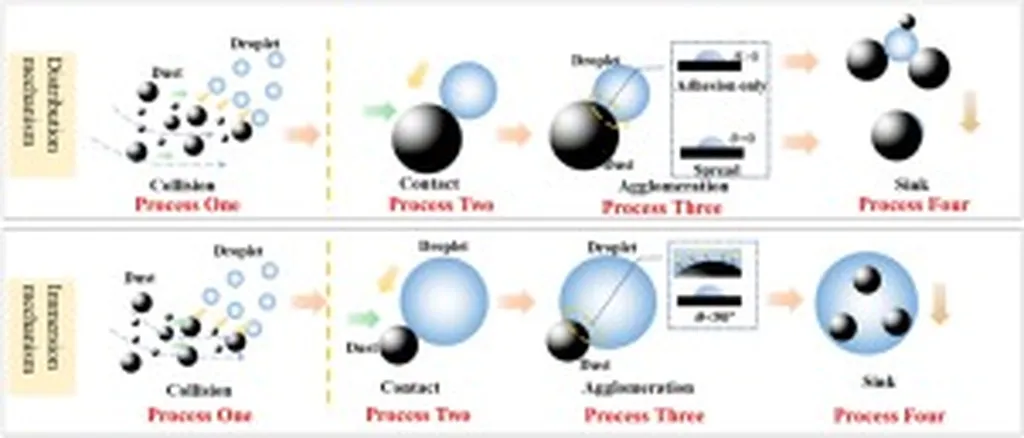In the heart of China’s coal country, a groundbreaking study is shedding new light on how surfactants—those workhorse chemicals used in everything from shampoos to industrial cleaners—can dramatically improve dust suppression in coal mines. The research, led by Xianrui Lei of the Safety Supervision Department at Shanxi Lu’an Environmental Energy Development Co., Ltd., isn’t just about keeping miners safer; it’s about unlocking new efficiencies in the energy sector that could have global implications.
Lei and his team set out to understand why some surfactants work better than others at keeping coal dust wet—and thus, under control. Their findings, published in the journal *Meikuang Anquan* (which translates to *Mining Safety*), reveal a microscopic world where water molecules cling to surfactant head groups like bees to a hive, forming hydration layers that are the key to effective dust suppression.
The team tested four different surfactants—dodecyltrimethylammonium bromide (DTAB), sodium dodecyl sulfate (SDS), dodecyl trimethyl betaine (BS-12), and aliphatic alcohol polyoxyethylene ether (AEO-7)—on coal samples, measuring their water retention rates over 100 hours. The results were striking. “All surfactant-treated coal samples showed significantly enhanced water retention,” Lei explains, “but the anionic surfactant SDS stood out as the most effective.”
To understand why, the researchers turned to molecular dynamics simulations, constructing a model with 30 surfactant molecules and 1,800 water molecules. What they found was a microscopic ballet of water molecules orbiting surfactant head groups, held in place by electrostatic forces and hydrogen bonds. SDS and BS-12, in particular, formed tighter, more stable hydration layers, with water molecules lingering closer to the surfactant heads and forming more hydrogen bonds.
The implications for the energy sector are profound. Dust suppression is a critical safety measure in coal mines, but it’s also a major operational cost. Surfactants that work better and last longer could mean fewer disruptions, lower water usage, and ultimately, safer, more efficient mining operations. “This research isn’t just about improving dust suppression,” Lei says. “It’s about optimizing the entire mining process.”
But the insights don’t stop at coal. Surfactants are ubiquitous in the energy sector, from hydraulic fracturing fluids to enhanced oil recovery techniques. Understanding how they interact with water at a molecular level could lead to breakthroughs in everything from water management to chemical formulations.
The study also highlights the power of combining experimental methods with advanced simulations. By peering into the microscopic world of surfactant-water interactions, researchers can make predictions that guide real-world applications. “This is a great example of how computational modeling can drive innovation in the field,” Lei notes.
As the energy sector grapples with challenges ranging from safety to sustainability, research like Lei’s offers a roadmap for progress. By harnessing the power of surfactants—and understanding them at a molecular level—we can make strides toward a safer, more efficient energy future. And in the coal-rich heart of China, that future is already taking shape.

